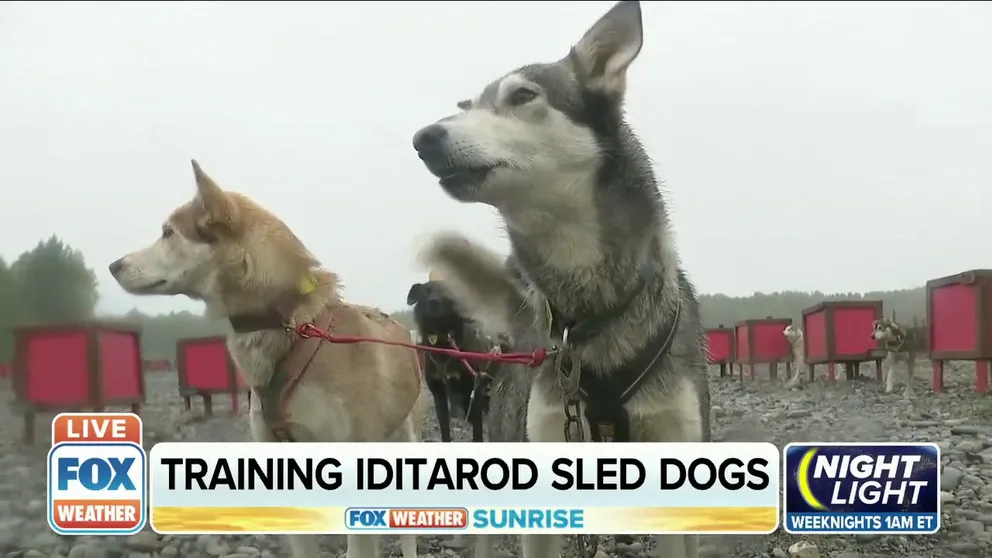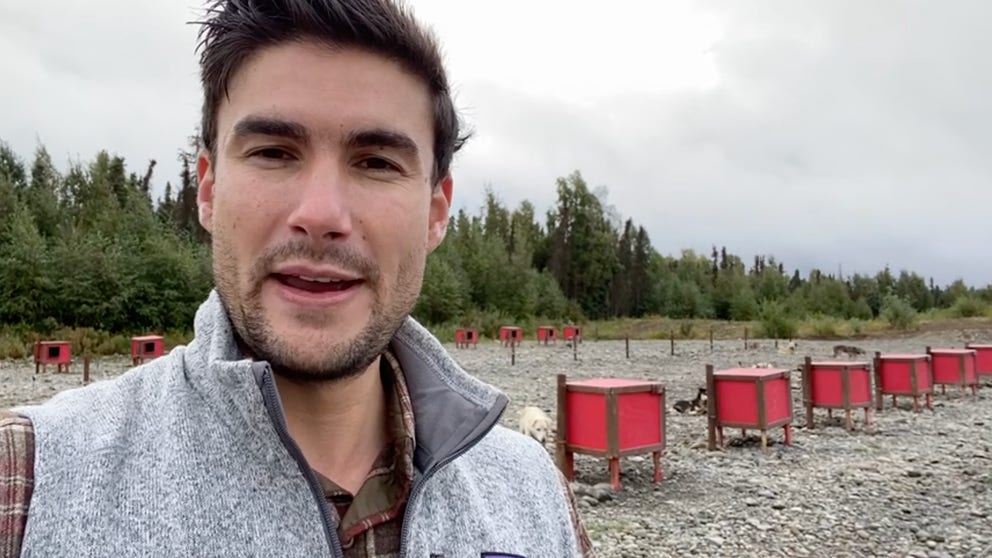Creativity key when training Alaskan sled dogs in summer months
Sled dogs are an Alaskan icon, but how do their mushers train these cold-weather pups in the summer months?
Creativity key when training Alaskan sled dogs in summer months
Sled dogs are an Alaskan icon, but how do their mushers train these cold-weather pups in the summer months?
TALKEETNA, Alaska -- When you think of dog sledding, you probably picture the Iditarod's icy images. Dallas Seavy knows all about it.
"Yeah, you have the ice on the eyebrows, and on your nose will be frostbite. You have to take your mitten off and thaw out your nose every couple of minutes," Seavy said.
The five-time Iditarod winner says you have to be very conscientious in cold temperatures.
"In 2012, I became the youngest person to win the Iditarod," Seavy said.
But to compete at that level, Seavy and his dogs have to train year-round.
"Working to develop those dogs, you know, developing them to their highest potential," he said.
Seavy and his team have to get creative when there's no snow on the ground.
"We just want to be active so that they're content. This is a very high-energy dog. They can't do nothing and be happy," he said.
During the summer and fall, the Alaskan mushers, like Seavy, use specially built dry landrace carts stocked with fat tires and custom shocks. About two hours north of Anchorage, near the tiny town of Talkeetna, Seavy runs Alaska Sled Dog Tours during these months.
"The guests that come on these tours, they're essentially allowing us to live a life that we feel passionate about," guide sled dog musher Chad Stoddard said. "Even if we don't do well on the races, we feel like we're winning every day just by being able to do this."
Being part of a sport that's so intrinsically a part of Alaska is rewarding for Stoddard. He says it feels like he is mushing in the past sometimes. However, the training has been catching up to the present.
Seavy turned his refrigerated trailer into a chilled treadmill to use on hot days.
"We will utilize that where we can actually refrigerate it and get the temperatures down so that the dogs can do a long enough run to be happy in their own skin," he said.
They'll also wet down the trails when running the dogs in higher temperatures.
"I've got a huge water tank that I can pull behind the tractor and fill those puddles up so that when we are exercising the dogs, they can get their feet wet and their stomachs wet every half mile or so," Seavy said.
Vlog: Max Gorden reports from Talkeetna, AK
Fox Weather's Max Gorden takes us along for the ride as he sees how one Iditarod-winning team does it.
In the spring and summer, Seavy also focuses on training the dogs during times.
"We'll take off at 5 a.m. and run until 8:30 a.m. and then shut it down and just maximize that coldest part of the day," he said.
Sled dogs are born to thrive in the cold with their thick coats and a high metabolism that keep them warm.
"It's one of the things that allows them to function in those cold temperatures. It's one of the things, in fact, the biggest thing, that allows them to travel 125 and 130 miles a day, day after day after day. They can process 1,2000 calories a day in a 55-pound dog," Seavy said.
But as mushers get better at training dogs in higher temperatures, Seavy believes the sport is growing.
"I've done mushing symposiums all over the United States and Europe and places that do not ever have snow, but yet dog sports are growing there," he said.
And no matter the place or the temperature, it all comes back to the bond between man and dog.
"I'm excited to see mushing (grow). This is something that has brought so much to my life. Having sled dogs in that relationship, that common goal and human-animal connection, that is really what it's about," Seavy said.

